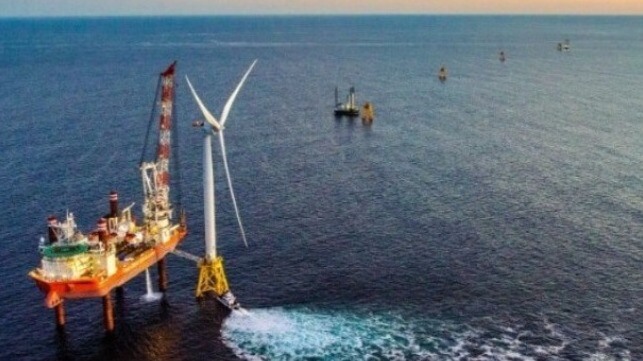U.S. Provides Guidance on Jones Act Application to Offshore Wind Farms

With efforts accelerating to develop offshore wind farms, there remain many unresolved questions on the scope of U.S. cabotage laws and how specifically the Jones Act will be applied to the construction of the wind farms. While the U.S. has said that it will apply the regulations in a similar fashion to their previous applications to the offshore oil and gas industry, partners at the law firm of Winston & Strawn highlight that because of a jurisdictional ambiguity, which was not addressed until January 1, 2021, the U.S. Customs and Border Protection agency has not issued many offshore wind rulings.
CBP is beginning to address some of the outstanding issues by providing responses to questions posed by the industry. On April 21, CBP posted on its public website a ruling dated April 14. According to partner Charlie Papavizas at Winston & Strawn the ruling responds to a request originally submitted in 2018 and supplemented in 2021.
“Many issues have arisen as a result about the application of the Jones Act to offshore wind installation activities, and the recent ruling addresses many of those issues in a single guidance document,” writes Papavizas in an update to clients. He notes that the ruling addresses many of the Jones Act issues which arise from the installation of offshore wind turbines off the coasts of the United States.
The ruling confirms that a foreign wind turbine installation vessel can install foundations and tower components provided it has not transported such items from a U.S. point, says Papavizas, and that such a vessel can move crew members and work materials from work site to work site because the crew members are not considered “passengers” and materials are not considered “merchandise.” CBP has previously issued rulings helping to define the two key terms in the application of the regulations.
In addition, the new ruling also confirms that a WTIV can arrive in U.S. waters and install foundations and components it has transported from a foreign port.
Another important area where the industry has been looking for guidance relates to cable installation. Winston & Strawn reports that the new ruling confirms the well-settled CBP interpretation that a foreign vessel can lay electrical cable in U.S. waters between two points in the United States. This includes picking up that cable in a U.S. port before commencing laying operations. Moreover, the use of a device to simultaneously lay and bury cable which utilizes water jets to create a trench does not constitute “dredging” and so can be undertaken by a foreign cable lay vessel.
Concerning the installation of scour protection, the ruling confirms that a foreign vessel can pick up rocks in a U.S. port and lay those rocks on the pristine U.S. seabed, although that would be unlawful if there are either rocks or a foundation already present. In a separate ruling, CBP had already determined that a foundation has a “vicinity” which is part of the “point in the United States.” According to the lawyers, on these rulings, CBP rejected arguments that rocks resting on the seabed do not constitute an “installation or other device” as required by statute to create a U.S. point.

that matters most
Get the latest maritime news delivered to your inbox daily.
“The significant surprise in the ruling relates to the installation of cable protection,” says Papavizas. He explains that CBP has indicated in past rulings that concrete mats could be loaded by a foreign vessel and then laid on top of already laid pipe because the already laid pipe is not a U.S. point (provided it was at least some distance from a wellhead). The April 14 ruling reverses this view based on a re-examination of the Outer Continental Shelf Lands Act and concludes that electrical cable laying on the seabed, even if not near a foundation, was intended to be made a U.S. point because it is a means of transporting resources.
Papavizas concludes that although the April 14 ruling does not address all the issues relating to the application of the Jones Act to offshore wind farms, it is a significant step towards giving the affected industry the guidance it needs.
